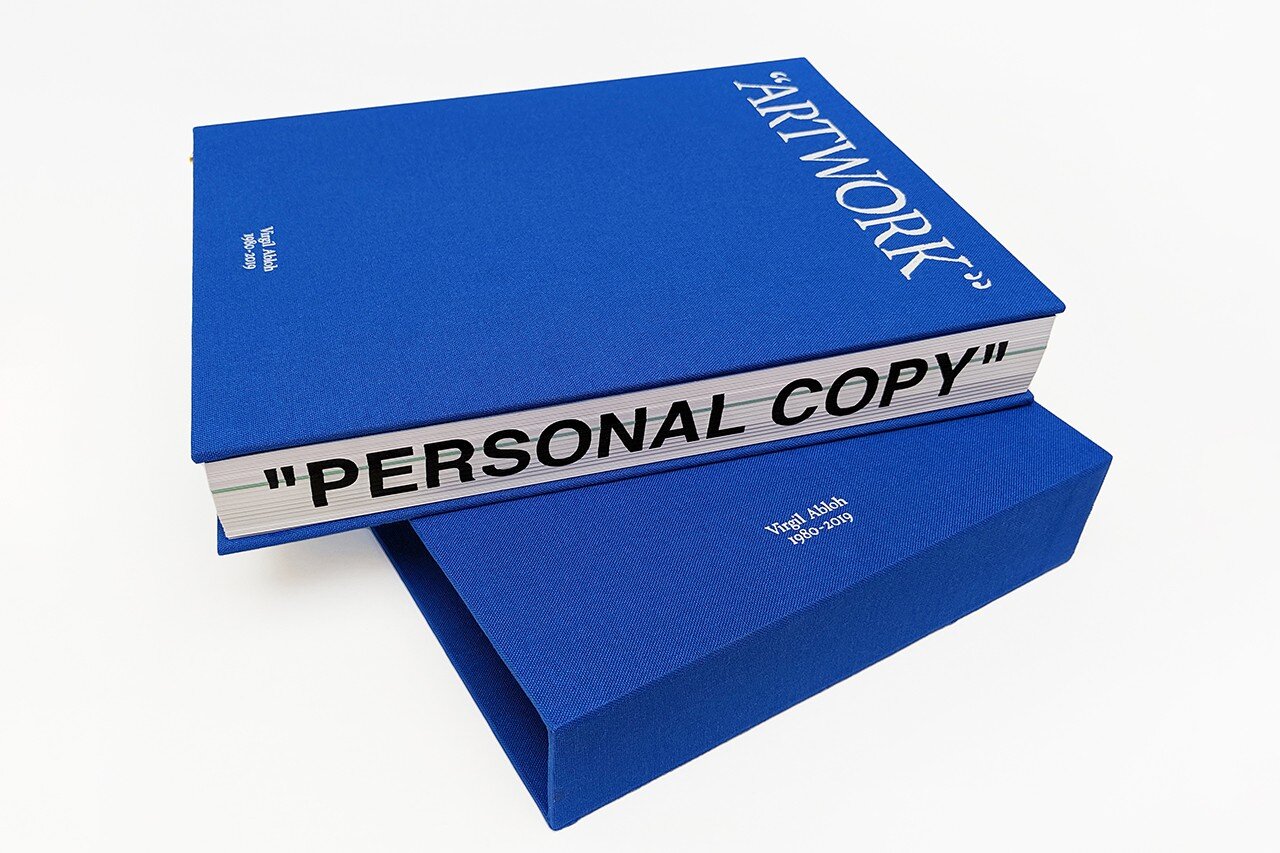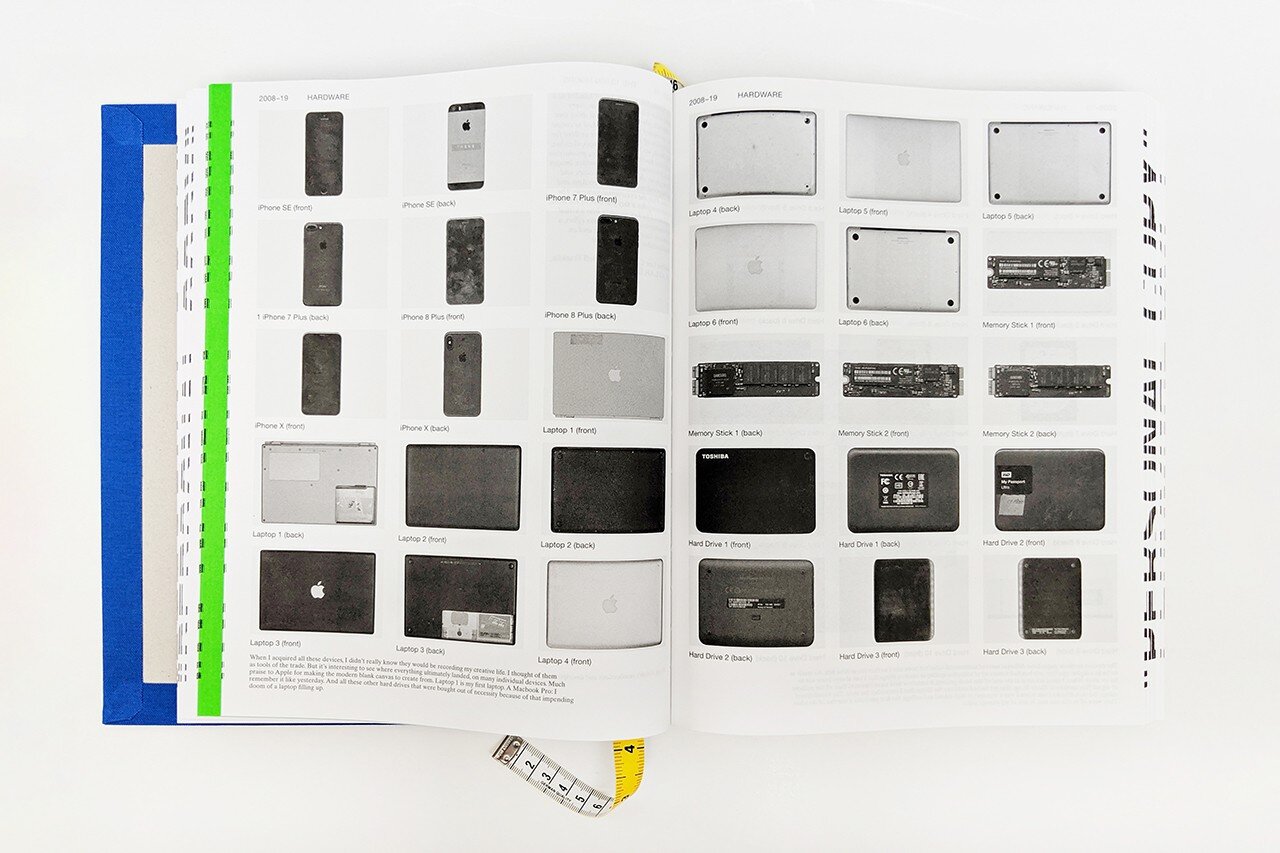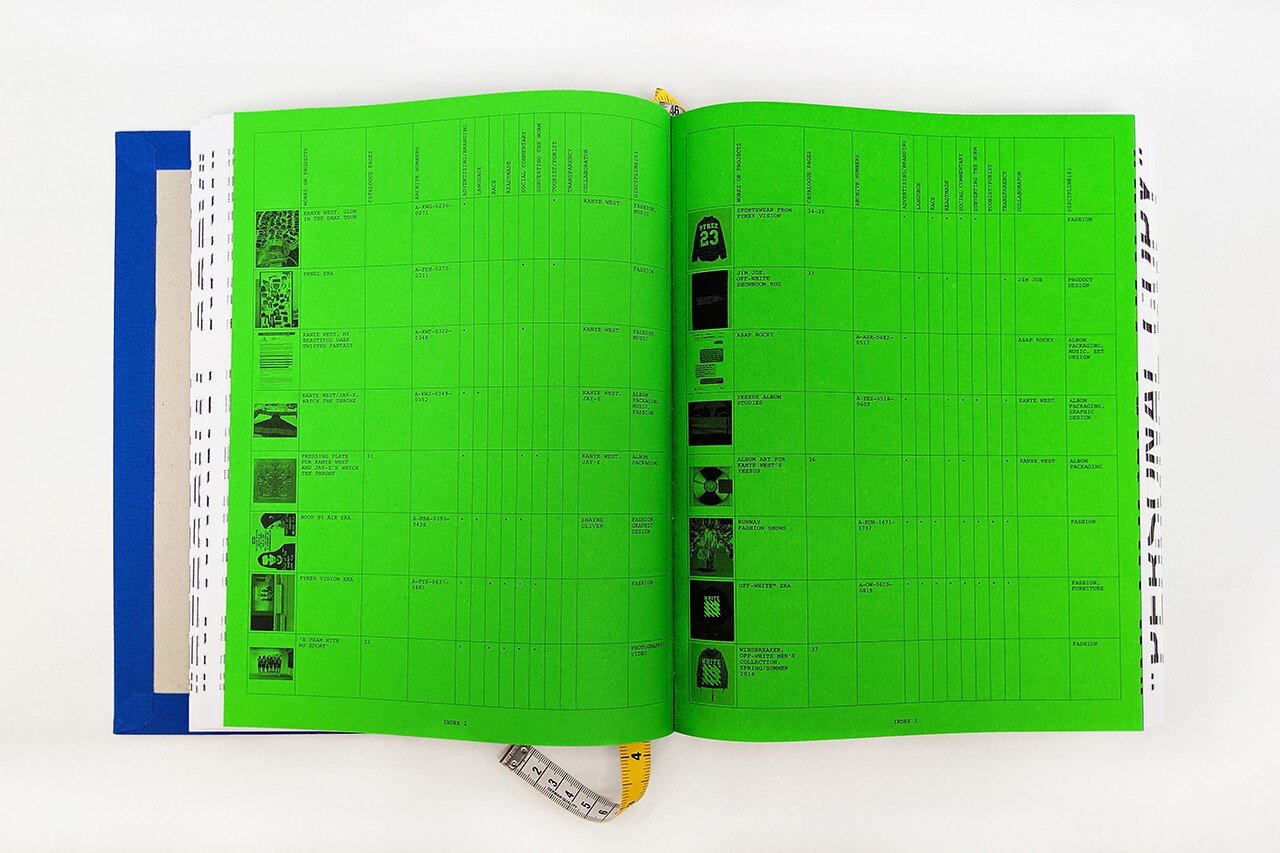Virgil Abloh: Figures of Speech
From street fashion to high culture, the work of Virgil Abloh, a celebrated multihyphenate artist, is showcased in this book.
For Abloh, the museum catalogue is another opportunity to "question everything." This monograph, produced in close collaboration with the artist himself, explores his creative output in a three-books-in-one format. The catalogue section offers an overview of Abloh's interdisciplinary practice by Michael Darling and features essays and interviews with key voices in art, fashion, design, and architecture, including Taiye Selasi, Lou Stoppard, Michael Rock, Samir Bantal, Rem Koolhaas, and Anja Aronowsky Cronberg. In the archives section, more than 1,800 never-before-seen images pulled from the artist's personal files reveal the remarkable breadth of his influences and collaborations. And the index cross references the catalogue plates--Abloh's works--with his projects and process, using a vocabulary of themes developed by Abloh. It comes in a cloth slipcase with "Personal Copy" silkscreened on the book fore edge, a measuring tape ribbon marker, and a flexi disc printed with a Juergen Teller photo that includes a recording of Virgil Abloh discussing his inspirations. This book is designed with Swiss binding. When opened the front cover lays completely flat and is not attached to the front pages of the book. The binding also intentionally exposes the spine of the bound book and the raw boards used for the case (cover).
From street fashion to high culture, the work of Virgil Abloh, a celebrated multihyphenate artist, is showcased in this book.
For Abloh, the museum catalogue is another opportunity to "question everything." This monograph, produced in close collaboration with the artist himself, explores his creative output in a three-books-in-one format. The catalogue section offers an overview of Abloh's interdisciplinary practice by Michael Darling and features essays and interviews with key voices in art, fashion, design, and architecture, including Taiye Selasi, Lou Stoppard, Michael Rock, Samir Bantal, Rem Koolhaas, and Anja Aronowsky Cronberg. In the archives section, more than 1,800 never-before-seen images pulled from the artist's personal files reveal the remarkable breadth of his influences and collaborations. And the index cross references the catalogue plates--Abloh's works--with his projects and process, using a vocabulary of themes developed by Abloh. It comes in a cloth slipcase with "Personal Copy" silkscreened on the book fore edge, a measuring tape ribbon marker, and a flexi disc printed with a Juergen Teller photo that includes a recording of Virgil Abloh discussing his inspirations. This book is designed with Swiss binding. When opened the front cover lays completely flat and is not attached to the front pages of the book. The binding also intentionally exposes the spine of the bound book and the raw boards used for the case (cover).
From street fashion to high culture, the work of Virgil Abloh, a celebrated multihyphenate artist, is showcased in this book.
For Abloh, the museum catalogue is another opportunity to "question everything." This monograph, produced in close collaboration with the artist himself, explores his creative output in a three-books-in-one format. The catalogue section offers an overview of Abloh's interdisciplinary practice by Michael Darling and features essays and interviews with key voices in art, fashion, design, and architecture, including Taiye Selasi, Lou Stoppard, Michael Rock, Samir Bantal, Rem Koolhaas, and Anja Aronowsky Cronberg. In the archives section, more than 1,800 never-before-seen images pulled from the artist's personal files reveal the remarkable breadth of his influences and collaborations. And the index cross references the catalogue plates--Abloh's works--with his projects and process, using a vocabulary of themes developed by Abloh. It comes in a cloth slipcase with "Personal Copy" silkscreened on the book fore edge, a measuring tape ribbon marker, and a flexi disc printed with a Juergen Teller photo that includes a recording of Virgil Abloh discussing his inspirations. This book is designed with Swiss binding. When opened the front cover lays completely flat and is not attached to the front pages of the book. The binding also intentionally exposes the spine of the bound book and the raw boards used for the case (cover).








